So you're quitting drinking alcohol, cutting back, taking a "dry month", or it's just a Tuesday night and you've got work early in the morning. What do you drink when you're not drinking? Fortunately, the days of sugary sweet mocktail recipes are gone, and the options for those who choose not to imbibe alcohol—for whatever reason—are practically endless. Non-alcoholic spirits have exploded in popularity and availability in the last few years, with new brands seeming to hit the market every other week. With so many choices, it's hard to know where to start, so we've compiled a list of the 10 best bottles to start your NA bar.
We're going to cover the basics of non-alcoholic spirits first, but if you want to get right to the recommendations, use the table below to jump down the article.
Table of Contents

What are non-alcoholic spirits?
A non-alcoholic spirit refers to a beverage that offers the experience of traditional spirits without the alcohol content. Non-alcoholic spirits are crafted using a combination of botanicals, herbs, spices, and other flavorings, resulting in complex and distinct flavors. They provide an opportunity to enjoy the taste and aroma of spirits, and typically have less than or no sugar and calories compared to traditional alcoholic spirits. With a range of options available, non-alcoholic spirits have gained popularity as a choice for those seeking sophisticated and alcohol-free alternatives.
How are non-alcoholic spirits made?
Non-alcoholic spirits are often made in a similar way to alcoholic spirits, although generally with more steps and complications. They employ techniques like distillation and maceration, except that alcohol either isn't used or is removed before the blending process. If alcohol-based distillates or extracts are used, they're added in such minute quantities that the overall ABV of the bottling remains under 0.5%. Sometimes, as in the case of Kentucky 74, an alcoholic spirit is made fully, from start to finish, before "reverse distilling" and removing the alcohol content.
Alternatively, some non-alcoholic spirits are made through a "composite" process where various extracts and flavorings are combined in a base of water, or another solvent like glycerin, to simulate the flavors found in classic spirits. Like producing alcoholic spirits, there's an art to it, and non-alc brands are hiring accomplished distillers, food scientists, or both to create the best sip possible.
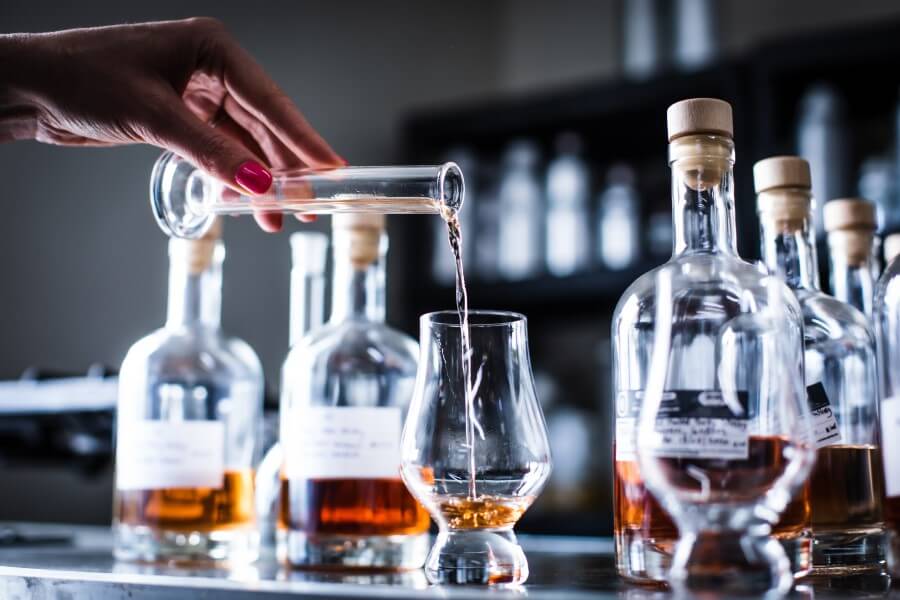
What do non-alcoholic spirits taste like?
Put simply, non-alcoholic spirits taste like the spirit they're trying to emulate. Non-alc gins, for instance, replicate the botanical flavor of gin—some are more juniper-forward, some citrus-forward, and others might lean into cucumber flavors—while NA whiskeys have flavors of oak, caramel, vanilla, or spice. Take this with a grain of salt, however. Many of the complex flavors found in spirits are tied to the distillation process and to alcohol itself, and certainly, the visceral impact of 40-50% ABV is impossible to replicate. So while non-alcoholic spirits get pretty close to tasting like alcoholic spirits, they're not going to be quite the same. As long as you're going in with an open mind, and not expecting that NA whiskey to hit like a shot of Jack Daniel's does—cause it's not going to—you're going to have a good time.
Other non-alcoholic spirits, grouped into a broad category of "unique botanical spirits", don't necessarily attempt to replicate the flavor of traditional spirits. Seedlip, Wilderton, and Optimist are all examples of spirits with unique flavor profiles that very intentionally don't fit into any existing category. You might make comparisons to gin, or even flavored vodka, but that doesn't tell the whole story. These are great options for folks looking to make unique cocktails, but can also be used in traditional cocktail formats.
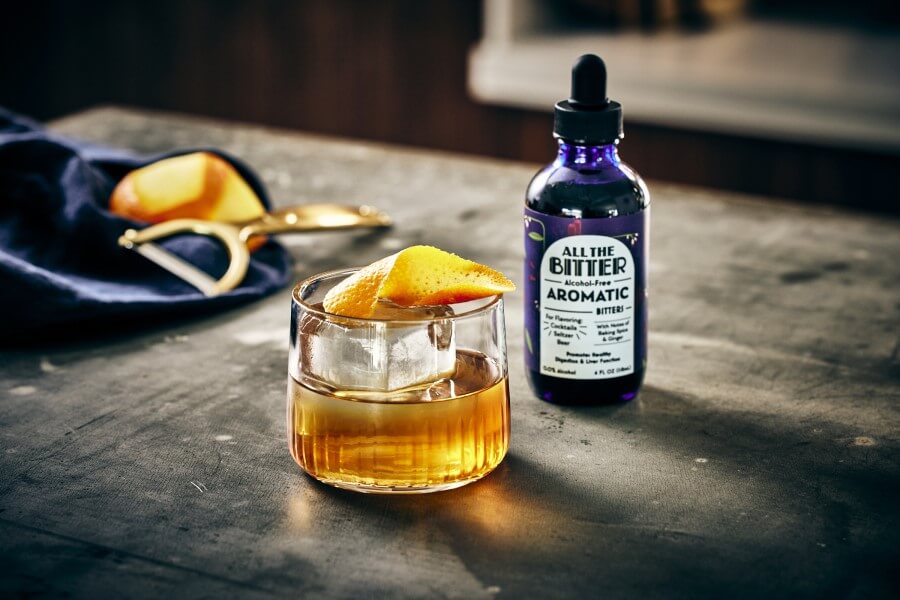
How do you use non-alcoholic spirits?
Non-alcoholic spirits are best used in proper cocktails, i.e., something made with a jigger, shaker, or mixing glass, and served in the appropriate glassware. Do NOT try to drink them straight! If you're looking for the same experience as drinking a glass of whiskey, neat, you're going to be disappointed. While NA spirits do a great job of emulating the flavors of their alcoholic counterparts, they're just not the same.
Think about it like a veggie burger. On its own, it kinda tastes like a hamburger patty, but you'd never fool anyone into thinking that a Boca burger was real meat if you gave it to them straight. But dress it up with condiments, lettuce, tomato, pickles, and a bun? Now we're talking! The experience of eating the entire burger is truly satisfying, scratching that itch for a hamburger and preventing the eater from being relegated to the salad bar, going hungry, or saying "screw it, I'm eating meat".
NA spirits can have great flavor, and the capsaicin "burn" that's added to many of them can be pretty convincing, but they don't really shine until you dress them up like that burger. One of the biggest hurdles for NA spirits is texture, which can be overcome with things like citrus, soda water, ginger beer, etc. Simple highballs like a gin and tonic or whiskey and coke will work, but much better are cocktails with several ingredients like a Margarita or Cosmopolitan. For a great selection of satisfying non-alcoholic cocktails, check out our recipe page.
Why are non-alcoholic spirits so expensive?
Non-alcoholic spirits often come with a higher price tag compared to their alcoholic counterparts, and there are several reasons behind this. Firstly, the absence of alcohol presents a challenge in extracting flavors effectively. Without alcohol, the process of creating a satisfying and flavorful beverage becomes more complex and costly. It requires additional steps, ingredients, and technologies to achieve the desired taste profile. For instance, in the case of Wilderton's distiller Seth O'Malley, he mentions the need to use 4-9 times more raw botanicals to achieve the same impact of flavor found in alcoholic spirits. These factors contribute to the increased production costs, ultimately reflected in the pricing of non-alcoholic spirits.
Like most NA producers, we solved the flavor challenge the same way: we simply have to pack as many raw ingredients into our tanks as we can. Our alcohol-free cocktail bitters require about 3x more botanicals to make than their alcoholic counterparts, and we leave them in the tank 3-4x longer, as they don't extract in glycerin as quickly as they would in alcohol. That extra cost in ingredients, and production time, is reflected in the price.
The upfront costs associated with producing non-alcoholic spirits also tend to be higher, as the category is still developing and new innovations and technologies are often necessary. On an ongoing basis, products that employ alcohol removal either have to purchase their own very expensive machinery or rent time on the equipment, further adding to the beverages' final cost.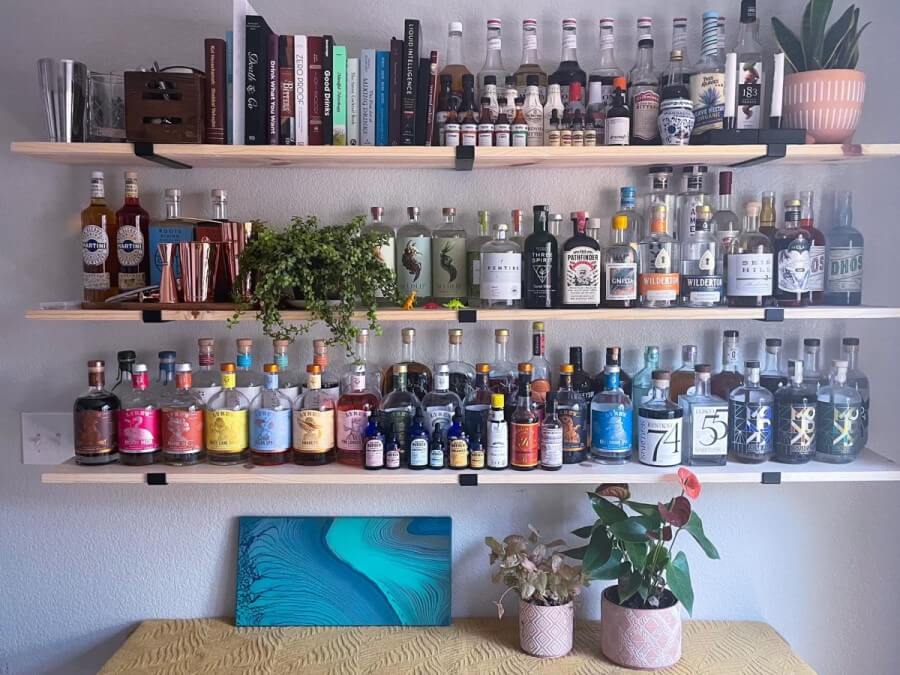
What are the best non-alcoholic spirits?
With so many non-alcoholic spirits on the market now, the choices can be a little daunting. Fortunately for you, we've spent the last couple of years tasting nearly every NA product on the American market—that photo above is our home bar—and we'd love to share what we've learned.
Whether you're just looking to pick up a bottle for when your alcohol-free friends come over, or you're ready to open a full-blown non-alcoholic bar, the following is a great place to begin.
(Note that this list is in no particular order, and we've chosen to focus on the "traditional" style of NA spirits that emulate existing styles of alcohol, as opposed to unique NA spirits. We'll cover the other style in a later article.)

Spiritless Kentucky 74
Spiritless has created one of the best bourbon alternatives on the market by first distilling real whiskey, removing the alcohol, and then blending it to create an expression that's full of real bourbon character. What really sets Kentucky 74 apart, though, is its use of real oak to create a non-alcoholic spirit that's immediately recognizable on the first sniff. You'll find familiar flavors caramel and vanilla, but the palate is really dominated by that toasty oak, making this a great choice for spirit-forward cocktails like an Old Fashioned. Notably, Kentucky 74 doesn't have the same intense "burn" from capsaicin that other spirits tend to have.
Free Spirits The Spirit of Bourbon
With so many NA spirits on the market today, it's important to note that even within the same style, each producer makes something a little different, just like in the alcoholic spirit world. The Spirit of Bourbon by Free Spirits is a little richer and rounder than Kentucky 74, with a bit more caramel and butterscotch, a little less oak influence, and a very convincing "burn". Additionally, Free Spirits produces gin, tequila, and a bittersweet liqueur that are all top-notch. All of the expressions have had B vitamins and Taurine added, which is thought to benefit the nervous system as well as play an essential role in metabolism and digestion.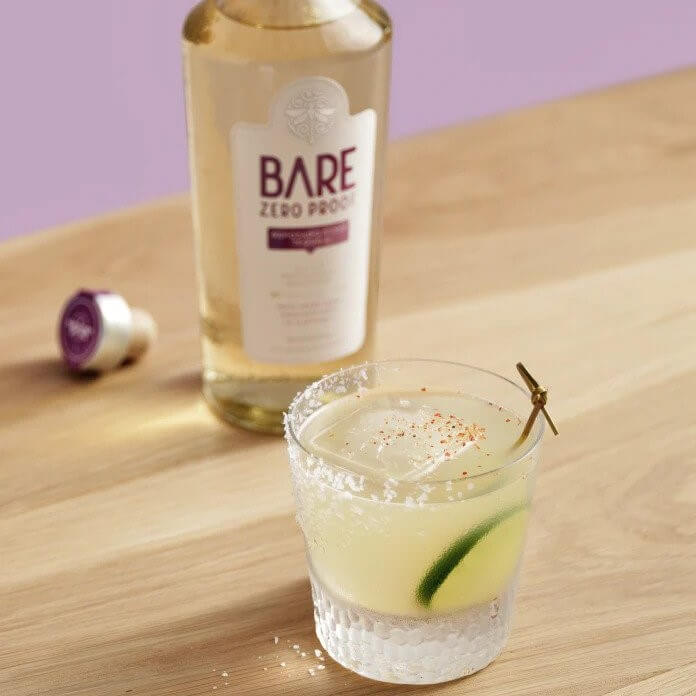
BARE Reposado Style Tequila
One of the most popular alcoholic spirits in the US, it's no surprise that there are a ton of non-alcoholic tequila alternatives available today. Packed with classic tequila flavor, BARE Zero Proof makes one of our favorite versions. Accented with agave nectar, salt, and grassy notes, this Reposado-style tequila melds seamlessly into cocktails like a Margarita or Paloma. Three years in the making, BARE was designed by bartenders and supports the trade with donations to the US Bartenders' Guild. One of the newer NA spirits on the market, BARE is a great example of the idea that being first isn't always best.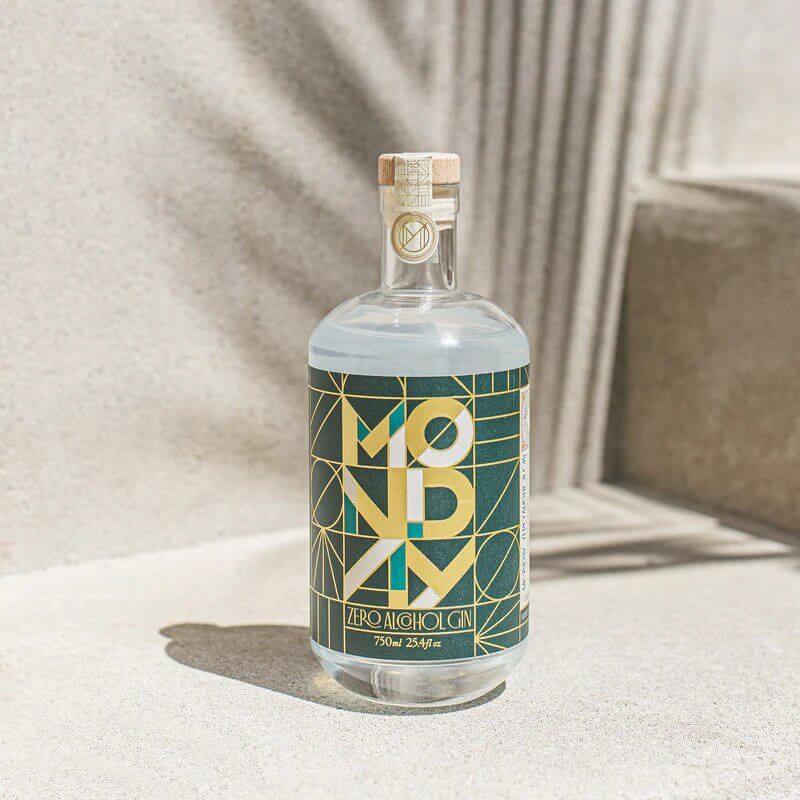
Monday Zero Alcohol Gin
If you were to take a poll of well-versed NA cocktail drinkers, chances are you'd find that Monday Zero Alcohol Gin is their favorite gin alternative. And for good reason! With a bold nose of juniper, citrus, and coriander, Monday is made in the style of a classic London Dry gin. The "bite" element is very well done, with a round and lingering heat that comes on more slowly than other spirits—there is a definite burn there, but it doesn't taste like you're biting into a fresh jalapeno. Handcrafted by an award-winning distillery in Southern California, it's no surprise that Monday is often cited as one of the best gin alternatives on the market. Try it in this non-alcoholic Southside cocktail!
Ritual Zero Proof Rum
Rum comes in many styles, from white to dark, spiced, aged, and everything in between. In the dark rum category—and overall, to be frank—one of our favorites is Ritual Zero Proof Rum Alternative. Like all of Ritual's alcohol-free offerings, their rum is intensely flavored. These spirit alternatives aren't shy! This has all the warm spice, vanilla, molasses, fruit, and funk that you'd expect from a dark rum. Most impressively, perhaps, this rum actually smells like alcohol. You know, that sensation that tickles your nose because you're basically smelling jet fuel? This has it. One sniff of Ritual Rum is enough to fool anyone into thinking this is ethanol. It's too dark to work in cocktails that call for light rum like a daiquiri, but is absolutely brilliant in fruity Tiki drinks like a Painkiller or Piña Colada, and this recipe for an Old Cuban is one of our favorite NA cocktails.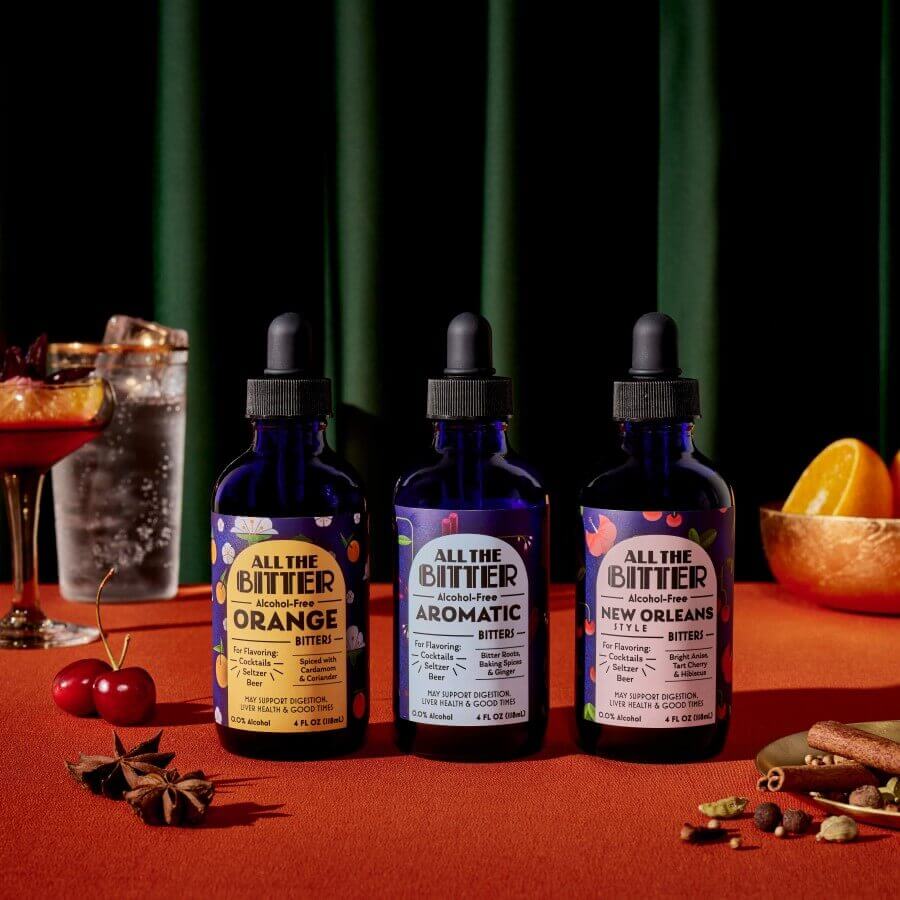
All The Bitter
Okay, so cocktail bitters aren't technically a spirit, but they're essential to starting any home bar or cocktail program. With just a few dashes they add depth and complexity, help to balance drinks that are overly sweet, and bring dimension to flat cocktails (not to mention, you can't make classics like an Old Fashioned without them). Integral to cocktails, bitters are also wonderful when mixed with sparkling water and can be added to everything from coffee to non-alcoholic wine.
Almost all cocktail bitters are made with high-proof alcohol and have an ABV between 30-45%. All The Bitter is instead made with a combination of vegetable glycerin, water, and apple cider vinegar, and works in cocktails the same way as classic bitters like Angostura, Peychaud's, and Regan's Orange. Handmade with organic, wild foraged, and functional botanicals, it's also designed to be beneficial for your gut and liver. Bonus!
Lyre's Italian Orange
Lyre's makes a dizzying array of non-alcoholic spirits, 18 of them at last count, ranging from absinthe to whiskey. While they cover all of the primary spirits like gin, tequila, and rum—and do so admirably—the lineup really shines in its replication of liqueurs like triple sec and amaretto. Their Italian Orange spirit, inspired by Campari, might be the best of the entire range, and just won the "Best New Spirit" award at Tales of the Cocktail in New Orleans. That's best new spirit, period, not best new NA spirit—kind of a big deal. It's a faithful representation of the style, loaded with flavors of bitter orange, cherry, clove, and citrus pith. It'll work beautifully wherever Campari is called for, including the internet's current favorite drink, the Negroni Sbagliato.
Roots Divino Aperitif Rosso
Started by brothers Manos & Nikolas in 2013, Roots produces a range of low- and no-alcohol spirits in Greece made from native botanicals. Aperitif Rosso is their expression of non-alcoholic sweet vermouth and is made very traditionally by infusing herbs, fruit, and spices into sweetened wine, and then removing the alcohol. Containing bitter orange, gentian, wormwood, and thyme, it's a fantastic alternative to alcoholic vermouth. Enjoyable on the rocks with a twist of orange, or mixed with tonic for a refreshing non-alcoholic spritz, Roots deserves a place behind every bar. If you're interested in making cocktails like a Manhattan or Negroni, this is something we'd recommend stocking up on.
Dhōs Orange
Triple Sec might not be the first thing you think of when stocking a bar, but it's essential to cocktails like a Cosmopolitan or Mai Tai. Produced by Ransom Spirits in Oregon, Dhōs Orange is like triple sec's more interesting cousin. With a nose dominated by sweet orange and orange blossoms, the taste starts with an impression of sweetness (monk fruit is used instead of sugar) that quickly dries out into bitter orange, spice, vanilla undertones, and an interesting cooling effect that comes from menthol. There's a nice, long, minty finish that gives it some staying power on the palate ... a boon to non-alcoholic cocktails that often end abruptly.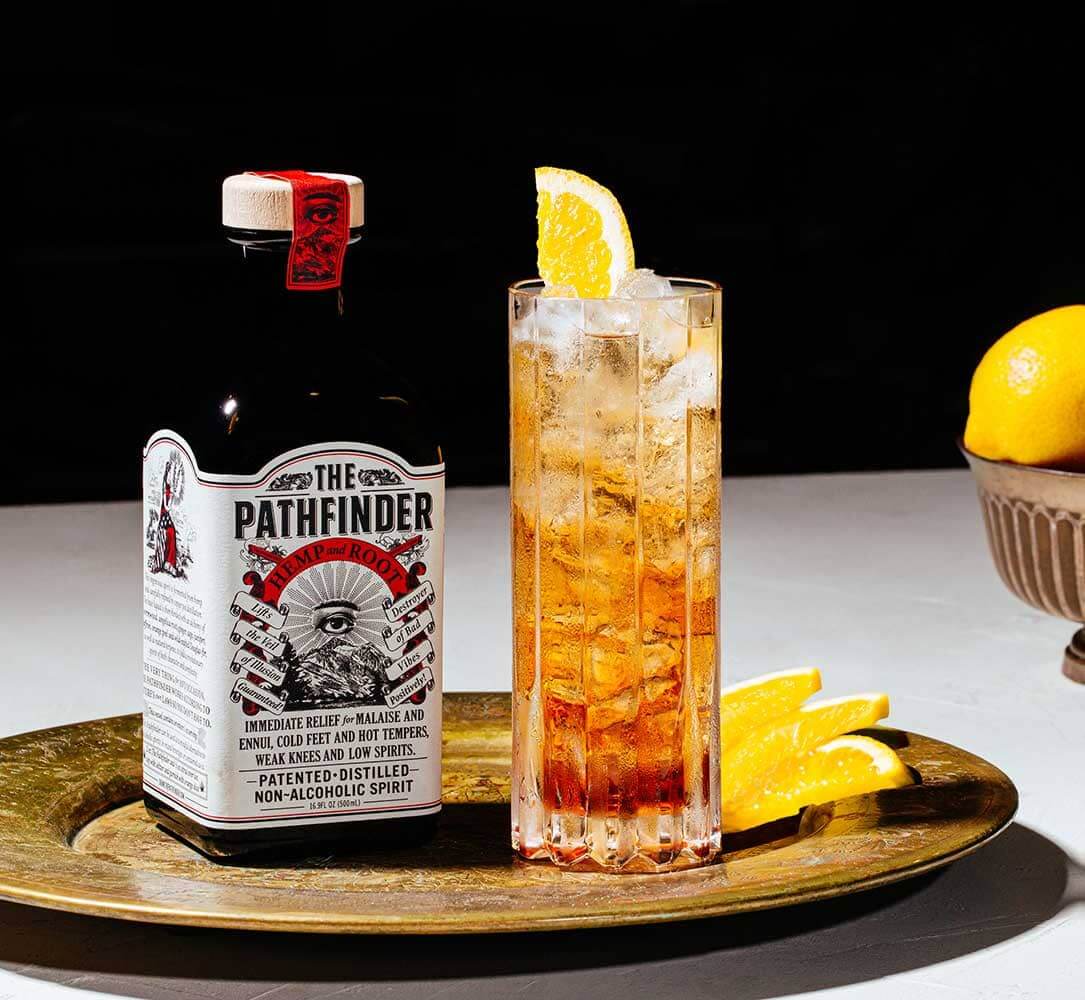
The Pathfinder
Quite simply, The Pathfinder is one of the finest non-alcoholic spirits on the market. Made in the style of an amaro, it's distilled from fermented hemp and flavored with botanicals like wormwood, sage, juniper, orange peel, and Douglas-fir tips. Very few, if any, non-alcoholic spirits come as close to replicating their inspiration as this one does. Bittersweet with citrus, warm spice, and lots of piney herbal notes, The Pathfinder is impressive in that it's one of the few NA spirits that can be enjoyed straight or on the rocks, as well as being a near-perfect non-alc substitute in cocktails that call for an amaro (or as a sweet vermouth replacement, albeit more bitter). And with a flavor profile this intense, it'll stand up well to full-strength liquors, making it a great tool for creating lower-ABV cocktails. This is a must-have.
The Last Sip
Non-alcoholic spirits can be an incredible tool if you're trying to cut down on your alcohol consumption, or if you don't drink at all. Generally not meant to be drunk straight, they're best enjoyed in a cocktail. With so many non-alcoholic spirits on the market, the choices can be a bit overwhelming, but any of the recommendations made in this article would be a great place to start.
Cheers! 🥃
-Ian




